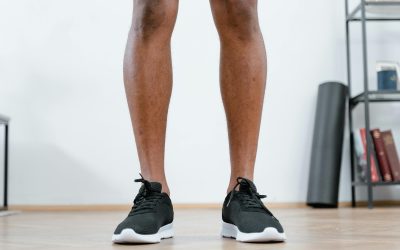If you’ve noticed some new veins developing on your legs, you might be concerned about the risks associated with varicose veins. Whether your new veins are bulging, purplish varicose veins, or fine, web-like spider veins, you’re not alone in wanting a solution to this problem.
While there are some efforts that can be made to prevent varicose veins from forming, the only surefire solution to a varicose vein issue is vein treatment.
Professional vein treatment not only relieves you of the physical discomfort associated with varicose veins; it can also help you restore your confidence and make you excited to show off your legs once more.
We’re vein specialists in the Milwaukee, Wisconsin area, and since opening our clinic, we’ve helped countless patients solve their vein problems.
Today, we’re going to go over what you should expect from your first vein treatment appointment, including how you can prepare and what you should be looking forward to.
1. Pre-Appointment Preparation
After you get in contact with us, we’ll work with you to schedule the appointment time that works best for you.
Upon your arrival, every clinic will want to get a better idea of who you are and your medical history. Therefore, you should be ready to explain your personal and, if possible, your family history of varicose and spider veins, any history of leg pain that you’ve personally experienced, past surgeries or injuries involving your legs, and any medications you’re currently taking.
If this isn’t your first time having vein treatment, it may be beneficial to bring along relevant imaging studies or medical records from previous treatments.
Some have asked us what to wear to their first appointment. While assessments can generally be done no matter what you’re wearing, we recommend wearing comfortable, loose-fitting clothing.
2. Initial Consultation & Evaluation
After you’ve arrived at the clinic and gone over your medical history, a vein specialist will discuss all of your present symptoms and concerns.
This will typically involve a thorough examination of the legs in order to find all visible varicose veins, spider veins, and any signs of underlying venous insufficiency, such as skin discoloration or swelling.
There are a few reasons for this part of the process. The primary concern is safety — while most varicose veins are simply cosmetic concerns, there’s always a possibility that a varicose vein can be connected to an underlying issue. Therefore, it must be determined before every procedure what the exact issues are, as it will allow your specialist to better target your problem veins.
3. Imaging
To get a better understanding of what’s going on beneath the surface, many clinics, ours included, employ the use of a duplex ultrasound. This is a non-invasive test that allows us to see blood flow in your leg veins and figure out any areas where valves may not be functioning correctly.
This is a relatively quick part of the process which should only take 20 to 30 minutes per leg at most.
4. Your Personalized Treatment Plan
Following all of this discussion and imaging, your specialist should have a good idea of what treatment plan, or combination of treatment plans, is right for you.
They may recommend Sclerotherapy, Endovenous Laser Ablation (EVLA), Radiofrequency Ablation (RFA), Ambulatory Phlebectomy, or some combination of these procedures.
During their recommendation, your specialist will lay out exactly how each of these procedures works and what you can expect from them, as well as being present to answer any questions you might have about them.
5. Insurance and Cost Review
Not all vein treatments are covered by insurance — but if your varicose veins are causing pain, swelling, or other medical symptoms, your insurance may cover part or all of your vein treatment.
If you’re interested in paying for your procedure through insurance, be sure to inform your specialist. Our clinic’s billing department will review your insurance benefits, provide a cost estimate, and explain what your coverage includes. If your procedure isn’t covered, we can work with you to find a payment solution.
6. What Happens Next
Most of the time, you won’t actually have any procedures performed during your first visit. Instead, this first visit is about understanding your vein health, mapping out a plan, and scheduling the appropriate procedures.
Your next appointment will likely involve the start of treatment. Thankfully, most modern procedures require little to no downtime, and allow you to walk out of the clinic the same day.
If you’re interested in starting this journey, reach out to us today to schedule a consultation.



